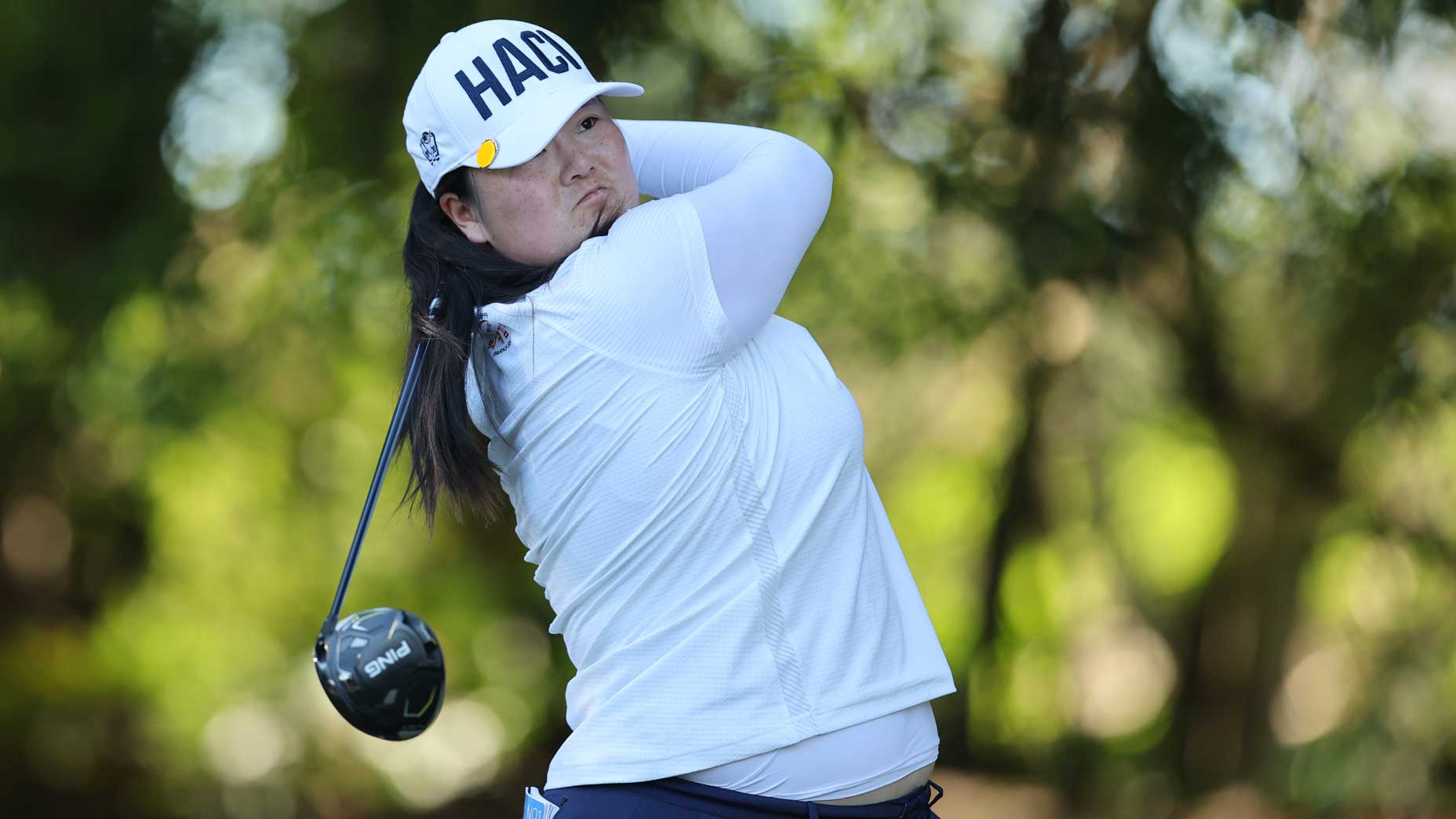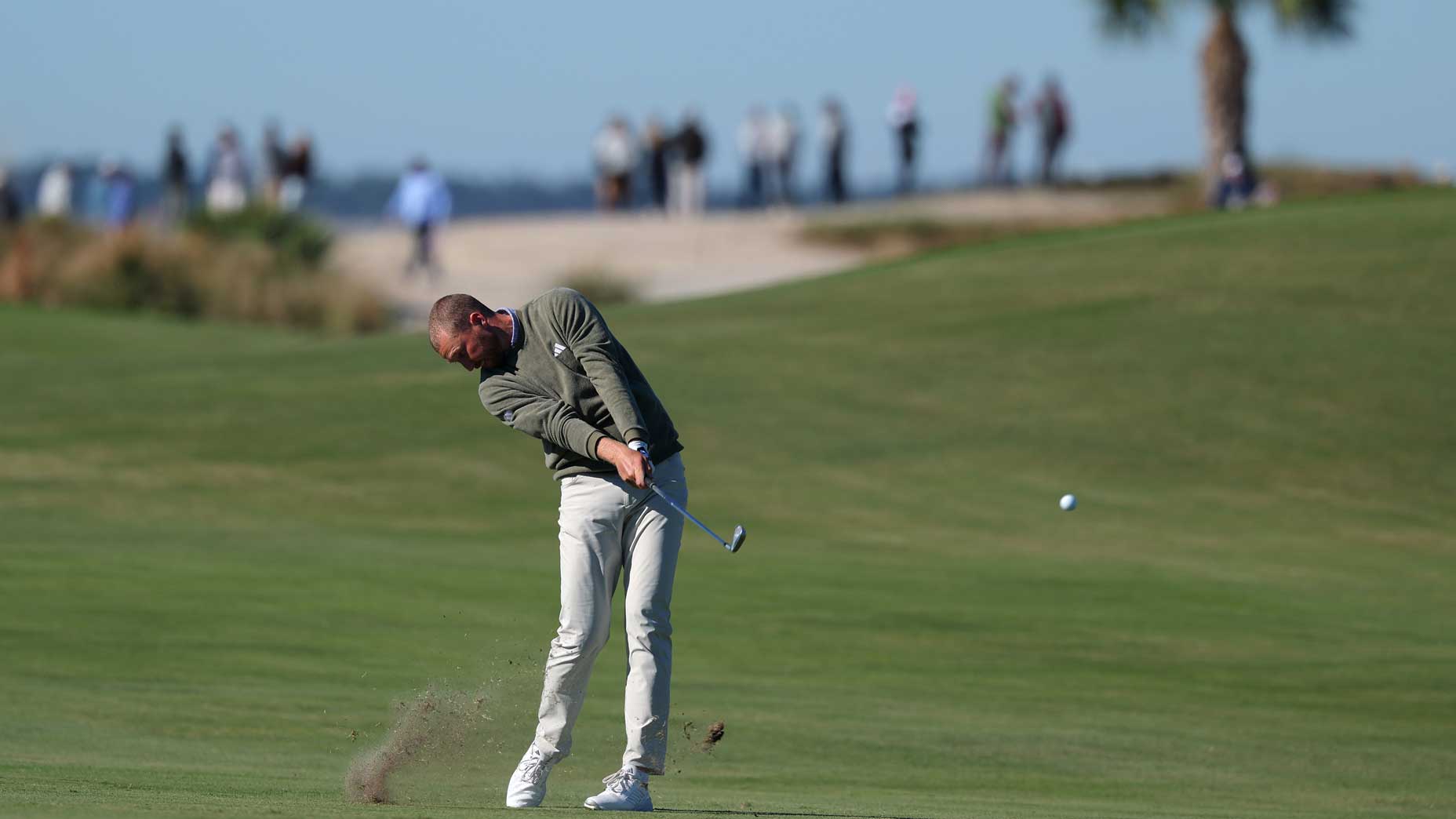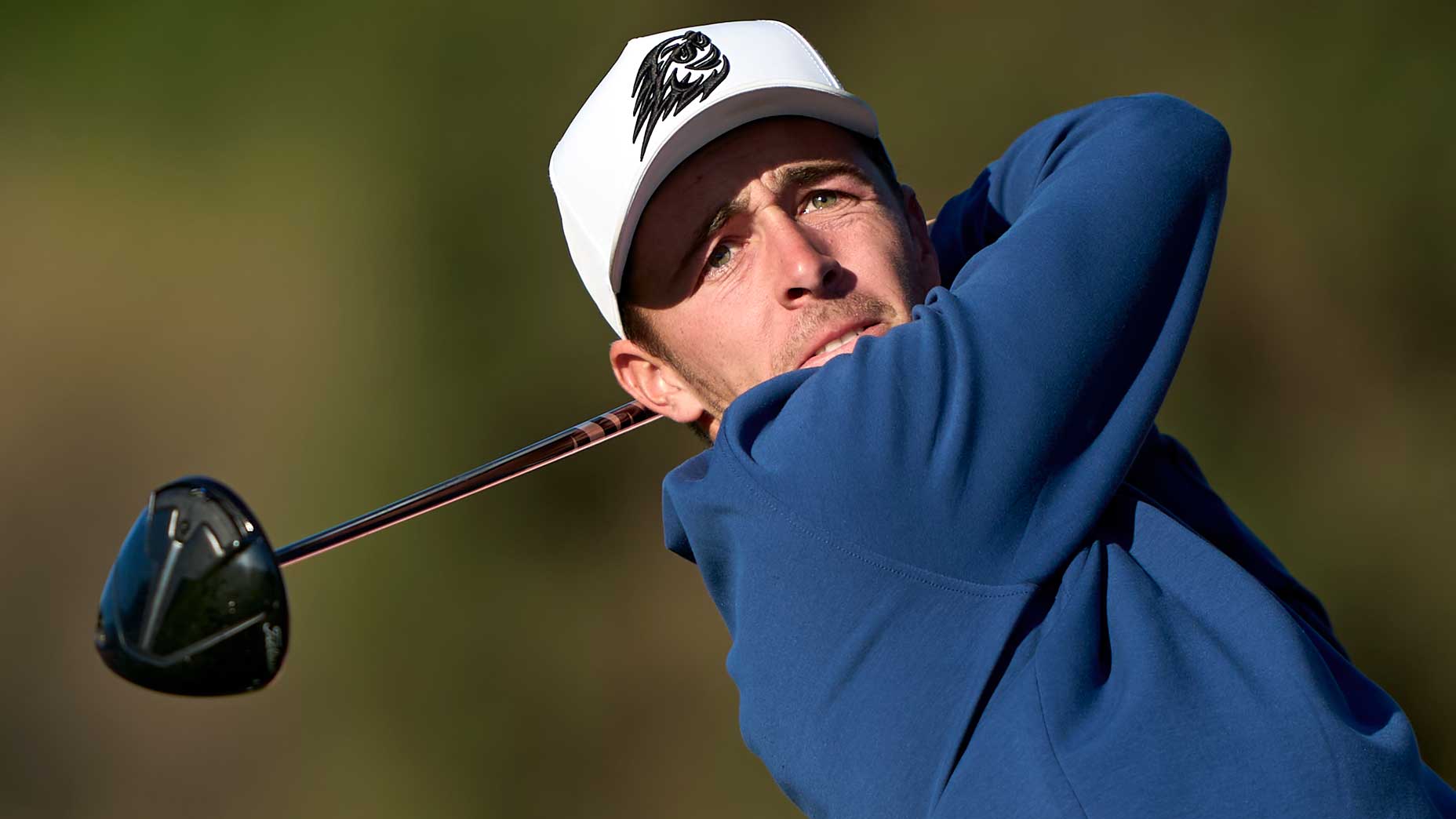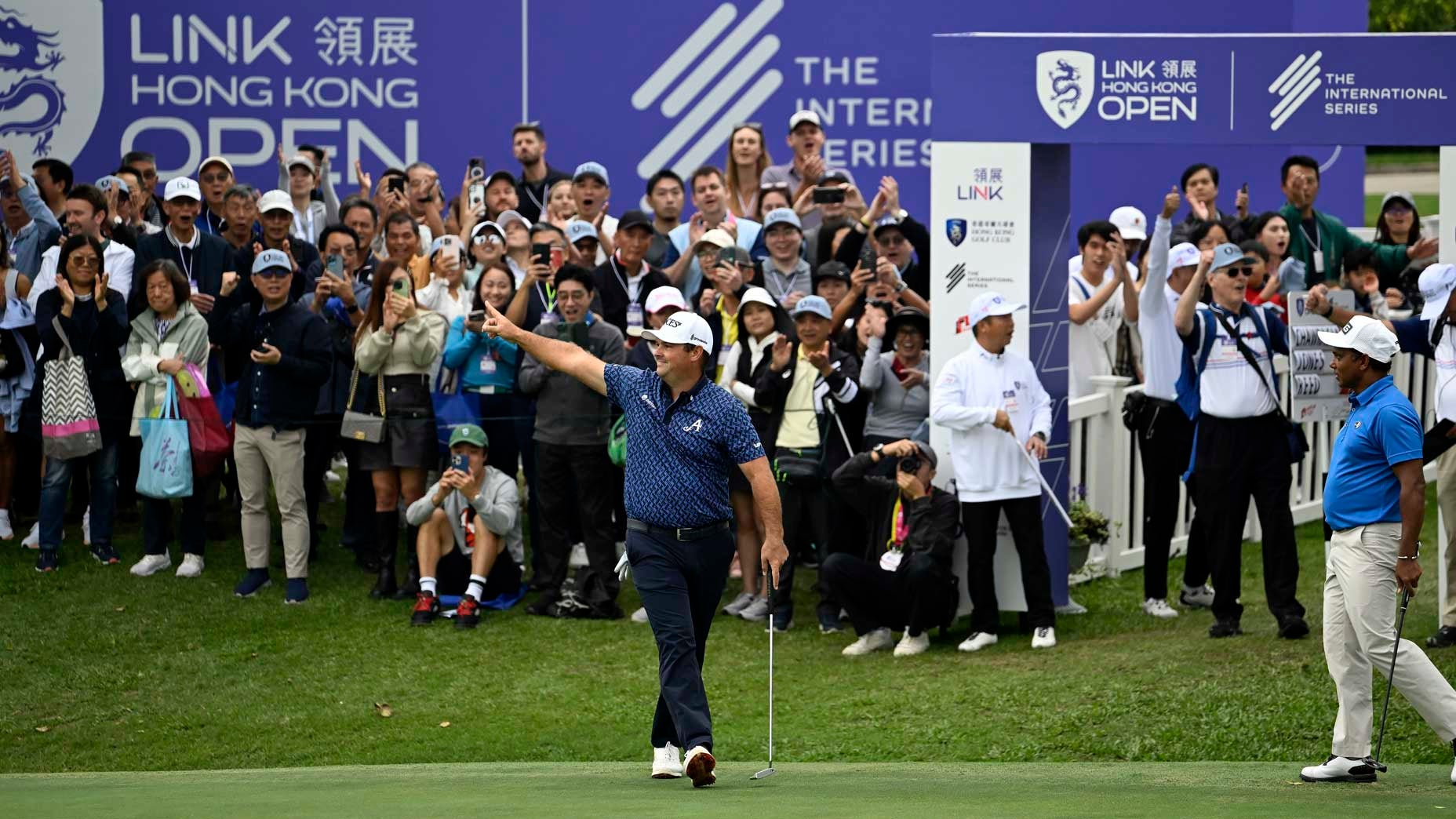The following has been excerpted and adapted from Players: The Story of Sports and Money, and the Visionaries Who Fought to Create a Revolution by Matthew Futterman, a senior special writer for sports with the Wall Street Journal. Printed by permission of Simon & Schuster, Inc.
Mark Hume McCormack was stuck. For nearly three years the former college golfer had been practicing law at the estimable Cleveland law firm of Arter, Hadden, Wykoff & Van Duzer. He was billing $15 an hour and collecting a modest associate’s salary, but he had an infant child at home and a wife who wanted to buy a bigger house. He’d already realized the life of an attorney wasn’t going to do it for him. He had no appetite for endless hours of managing cases and babysitting corporate matters and loan closings.
As 1958 wore on McCormack started to think that there had to be more to life than practicing law. He had two loves: golf and making money. He needed to find some way to combine them. Perhaps, he thought, he could represent a professional golfer the way he represented his other clients.
The idea that someone might be able to make a living representing an athlete was a pretty silly notion in the pre-McCormack era. Babe Ruth used a Boston druggist to represent him in salary talks. For years, lawyer Morris Engelberg represented Joe DiMaggio, but the Yankee Clipper’s riches mostly came long after he retired from baseball. Boxers had agents, but their sport necessitated it. They had no organized league or federation setting competition schedules. Two fighters needed managers to set up a fight. The agents needed to work with the promoters who would put up the prize money and set up the event like the producer of a show. Professional basketball had only started a decade before. Pro hockey had six teams. Pro tennis barely existed at all; it was little more than a couple dozen players barnstorming around and playing wherever they thought they might be able to sell tickets; the so-called Open era, when professionals were finally allowed to play in the grand slams, was still a decade away. If athletes were barely scraping by, then a profession built on taking a small percentage of their earnings wasn’t going to be particularly lucrative, either.
The more McCormack thought about the situation, the more puzzled he became. Pro athletes were adored and had a unique skill set. Why didn’t they make more money? Pro golf was a bunch of guys spending months on the road in beat-up cars and competing for a couple thousand dollars a week. The prize money was paltry, barely enough to cover the expenses of most pros. The occasional product endorsement—a cigarette ad, for instance—might garner a couple hundred dollars and a few cartons of cigarettes. Shouldn’t they get more than that? he wondered. Yes, of course they should, and he was pretty sure why they weren’t: most pro golfers didn’t have any kind of lawyer or manager or agent. There was an opening, and it was a lot bigger than some of the cracks of daylight he had seen Arnold Palmer smash some miracle shots through the past couple of years.
In the spring of 1950, when McCormack was still a college student, he drove from Annapolis, Maryland, to Raleigh, North Carolina, for a golf match that pitted his team from the College of William & Mary against Wake Forest University. McCormack headed out to the course early in the morning to warm up. In the distance he saw a kid named Arnold Palmer whacking irons across the driving range. He’d never seen anything like it before. Once the match got under way, Palmer wrecked one of McCormack’s teammates. McCormack didn’t see it. He was busy with his own match. But the image of Palmer blistering his irons remained etched in his mind.
Supposedly, it all began with a simple handshake. The legend holds that Mark McCormack, the first sports agent, and Arnold Palmer, the first sports star, shook hands on a deal for representation and the roots of IMG, the first sports mega-agency, fell into place from there. Not exactly.
During the first week of November in 1958, McCormack traveled to Atlanta, Georgia, and checked into the Heart of Atlanta Motel for a forgettable golf tournament known as the Carling Open. It was held that year at the Cherokee Town and Country Club. McCormack didn’t go to the tournament to watch golf. McCormack went to act on a dream. He needed and wanted more, and he hoped he was going to find it at the Heart of Atlanta Motel. With its two swimming pools, three diving boards—one of them thirty feet high—and sprawling sun patios, the two-story, 216-room motel was the essence of faux swank in 1958. It was also the ideal locale to convince the best golfers in the world that he was just the right person to book their exhibition appearances.
McCormack had run the idea past a golfing buddy of his named Richard Taylor, who headed up public relations for the Carling Brewing Company. McCormack had spent time rubbing elbows with the country’s top golfers at the US Open and at a few other tournaments, and he had picked up on something he thought was a little strange for a collection of people who were so much better at what they did than 99.9 percent of the population: they didn’t make very much money. Tournament purses were worth a couple thousand dollars. McCormack didn’t think he could do much about that. But the low pay forced the best golfers to hunt for money off the course. The really good ones had deals with equipment manufacturers, which helped cover their travel expenses. Yet even the best golfers still scrounged for extra work, endorsing a product or appearing at an exhibition at a country club for a couple hundred dollars, plus a steak dinner and drinks with the membership or the executives at whatever company might be sponsoring the outing. There also didn’t seem to be any mechanism for how they could secure these opportunities. Winged Foot or The Country Club in Brookline or Atlanta Athletic or Chase Manhattan Bank either called a pro, usually one they had some personal connection to, and offered him the chance to play in an exhibition, or they didn’t. The money—sometimes it was $100, sometimes it was $500—was the money.
Taylor liked the idea and together they hatched a plan to launch it. The Carling Open would be the place, they decided. Since Taylor worked for Carling, they’d have access to any golfer they wanted during the day. Each night, after play ended, they met with any players willing to take the twenty-mile drive south from Cherokee near the Chattahoochee River in Sandy Springs to visit them at the Heart of Atlanta Motel downtown. There, McCormack and Taylor sat, offering drinks and explaining their half-baked vision of how they might put some extra dollars in a top golfer’s pockets—and along the way turn themselves into something more than white-collar working stiffs.
They talked to a dozen golfers. Each one listened to the plan for a company called National Sports Management, which they were told would put the golfers’ needs first. It was what every golfer ultimately wanted, McCormack knew, especially a rising star he pitched one night named Arnold Palmer, the reigning Masters champion.

The exhibition engagements would happen on the players’ days off before a tournament began, in areas where they would be preparing to compete anyway, McCormack said. He was ready to begin soliciting country clubs and corporations in the new year. He would suggest a rate for each pro. Palmer, Toski, and the other top players could get $500 for a weekday and $750 for a weekend or holiday. McCormack promised not to rope them in against their will. These would be nonexclusive contracts that gave the athletes the opportunity to suggest their own rates or end the deals after a year. They just had to show up if McCormack found them a gig at their agreed-upon rates and they didn’t have any scheduling conflicts or injuries. For their work, McCormack and Taylor asked for 20 percent for new exhibition engagements and 15 percent for negotiating a new deal with a corporation or club where the player had played before signing on with the new venture. Just give it some thought, McCormack and Taylor told them. A proposed contract would arrive in a few weeks.
A month later, on December 13, McCormack began to fire off a series of letters and contract proposals to everyone who had raised his hand in Atlanta. That included Bob Toski, Mike Fetchick, Gene Littler, Julius Boros, Billy Casper, Dow Finsterwald, Art Wall, Jay Hebert, Ernie Vossler, Jim Ferree, Doug Ford, and, of course, Arnold Palmer.
“I assume you escaped Atlanta unscathed since I have had no requests to defend any lawsuits in the Georgia courts so for that I am very pleased,” McCormack began his letter of solicitation to Palmer.
For a group of players who either didn’t have anyone working on their behalf or were used to having equipment contracts put in front of their faces and told that the terms were nonnegotiable, McCormack’s offers were a revelation. The players agreed that any money they earned would get paid first to NSM, and then NSM would distribute the money to them. It would make it easier for McCormack to keep track of their payments for tax purposes, McCormack explained. He also insisted they send him copies of all the current deals they had with clubs, corporations, or equipment manufacturers. This would allow him to understand how and where he could boost their incomes. There was a side benefit in this for McCormack, of course: he was about to gain an overnight education in the market for the services of the best golfers in the world. Within weeks he was going to be the only one on the sell side of the business to know the going rate for Spalding’s name on a golf bag or for Julius Boros to show up and play Merion with the executives of Philadelphia’s top utility company.
MORE: Arnold Palmer Unfiltered, from Michael Bamberger’s Men in Green
Littler, Toski, Ferree, and Vossler all signed their contracts by December 17, just four days after McCormack sent them. By early February, Wall, Ford, Hebert, Boros, Finsterwald, and Casper had signed theirs, and by early March, National Sports Management was representing seven of the top ten money winners on the 1958 PGA Tour. Palmer, who, according to the legend, never had anything but a handshake deal with McCormack, actually signed a contract, too. The greenskeeper’s son from Latrobe, Pennsylvania, who’d sneaked off with the 1958 Masters by a stroke, entered McCormack’s stable on January 15, 1959. The concept of International Management Group, the industry behemoth that would eventually influence nearly every corner of the modern sports industry, still wasn’t even a germ of an idea in McCormack’s mind. But maybe, just maybe, this frustrating and fascinating game McCormack had started playing as a grade-schooler would start to pay him back in some small way. That was the dream.
On January 31, 1959, McCormack filed articles of incorporation for National Sports Management with the state of Ohio. That was the easy part. By mid-March, McCormack was practically begging an IBM executive from Philadelphia named Dick Sayford to sponsor an exhibition or pay a leading pro to endorse a new IBM machine. A month later he offered Sayford a cut of the gate at any exhibition the company sponsored. He went after his old Army buddy Al Mulberry, who was still serving and had little money or reason to sponsor a golf exhibition. He told Mulberry he could charge $2 to $3 for tickets and act as a kind of bookie during the event. He cut the rates on clinics with his stable of pros to $200 to $400 for 90 to 180 minutes. He told prospective customers he had top female players to offer, too: Louise Suggs, Barbara Romack, and Beverly Hanson could all be hired for $300 for a weekday or $500 on a weekend.
By September, players were starting to wonder what they were paying McCormack for. Barbara Romack and Doug Ford wanted out. The business was proving to be a significant money loser. Even Arnold Palmer was getting turned off. Palmer had signed on with McCormack reluctantly. “I wasn’t looking for an agent. I had my wife. She was handling everything,” Palmer says. In reality, Winnie Palmer was doing a pretty terrible job representing the best interests of her husband, but all Palmer knew in 1959 was that this gentleman McCormack, whom he kind of remembered playing against in college, had promised to make him a healthy amount of additional income by placing him in exhibitions, and that wasn’t happening. Still, after convincing Palmer to sign on for the exhibitions, McCormack continually pressed him to allow him to represent all his marketing and endorsements and to serve as his business manager.
“We kept talking all through 1958 and 1959,” Palmer says. “He would tell me about all the business he was creating for all the golfers he had signed up. It was him and this public relations guy from Carling, the beer company. They had Littler and Ford and eight or nine or ten other players. He asked me again and again, and I kept saying no. I had my wife. She was running my office. I wasn’t looking for anyone. I was fine doing my own thing.”

Palmer toiled away in his home workshop in Latrobe, grinding clubs so they were the exact specifications he wanted. Winnie Palmer sat inside the house, opening the mail and answering the phone, which was beginning to ring incessantly. Palmer understood he was already the most popular golfer on the tour. He sensed he was on the cusp of becoming the best one, too, and he felt there was an inherent flaw in McCormack’s business plan. On the golf course, Palmer’s game was following a steady upward arc. He also played in front of the biggest galleries, leading a screaming throng known as “Arnie’s Army” that loved his grip- it-and-rip-it approach to the game. Palmer rarely saw a shot he didn’t think he could hit, no matter how many trees he needed to bend the ball around or how much water might stand between him and the green. He’d take a long draw on his cigarette, toss it down on the grass, and take dead aim. He could hit the ball a mile, split the fairway seemingly every time, and always appeared fearless as he charged up to the green to confront his putts. Palmer knew he could probably charge more for his time than anyone else on the tour. If McCormack was simultaneously representing him and a stable of less popular golfers, Palmer was bound to get undersold.
“I wanted someone to represent me alone,” Palmer says. “I didn’t want to be compared with and bargained for against two or three or ten other guys.”
In the fall of 1959, McCormack once again suggested he take a more active role in representing all of Palmer’s affairs.
“I said if you want to do this, then you go and get rid of all those other players and represent me exclusively,” Palmer recalls. “He said he would think about it and get back to me.”
For McCormack the decision was something of a no-brainer. If there was one player to bet on becoming a megastar, it was Palmer. After splitting up his business with Taylor, McCormack called Palmer and told him he’d made a decision.
“He said he had given everyone else up and was ready to go with just me,” Palmer says. (In fact, this was only partly true.) “I said that was terrific. He said he would draw up a contract. I said, ‘No you won’t.’ He said, ‘I’m a lawyer, that’s what I do. My business is doing contracts.’ I said, ‘I don’t really care what you do as a lawyer. What you’re going to do is you’re going to tell me what you’re going to do for me, and I’ll tell you what I’m going to do for you, and then we’ll shake hands and go ahead and do what we said.'”
And thus the legend of the Palmer-McCormack handshake deal was born. It’s a sweet story, but largely an apocryphal one. Eventually there would be thousands of pages of legal agreements that certified the business relationship between McCormack and Palmer, including the one that gave Palmer a significant stake in IMG.
But McCormack made sure the legend of the handshake endured. An impresario like McCormack knew it would reveal exactly what he wanted to about the instincts and personalities of its two characters, the down-home golfer who played the game like a fighter jock and the trailblazing entrepreneur who valued quality over quantity, the biggest single name rather than a series of smaller ones, the intrinsic worth of the best and most enduring people and institutions. He knew that quality would serve as an entrée to more quality.
By the spring of 1960, McCormack had every reason to believe his career had just taken a sharp turn for the better. He had just signed the client of his dreams, a singular talent in the prime of his career with unmatched skills, innate charisma, and unlimited potential.
Later that year, Palmer won his second green jacket. McCormack watched it all and couldn’t quite believe his good fortune. The charismatic golfer who was already the crowd favorite was evolving into a superhero just as he’d agreed to let McCormack take over his business. McCormack had rolled the dice. He’d largely agreed to give up pursuing other golfers to work only with Palmer, who could have just as easily thrown out his back and missed the rest of the year. Instead, it felt like the sports equivalent of emptying your life savings to splurge for the impressive four-bedroom on the lovely block, then discovering it was sitting on top of an oil well.
With their partnership solidified, working for Palmer quickly became the central obsession of McCormack’s professional life. Every other day he would call Palmer with another proposition. The phones didn’t stop ringing. The offers kept rolling in. There seemed to be no limits to the empire that Palmer might be able to build.
And then McCormack read Arnold Palmer’s contract with the Wilson Sporting Goods Company of Chicago.







